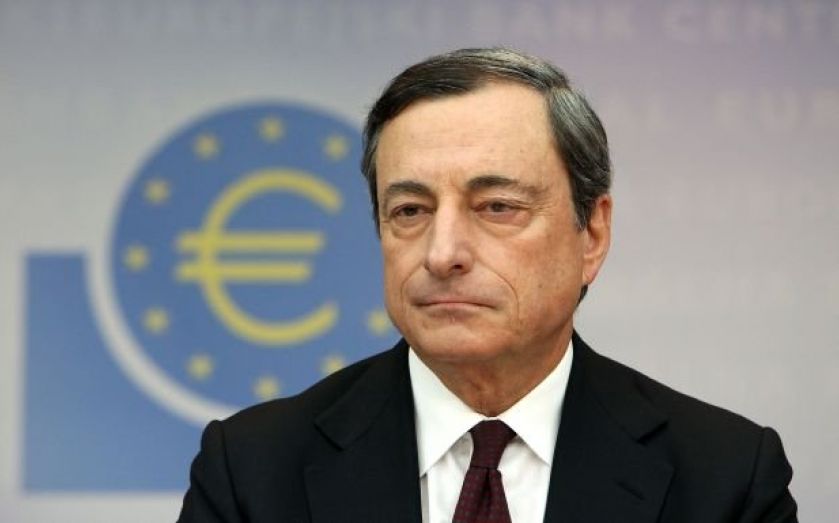| Updated:
Eurozone slips further towards deflation, but employment is up

Eurozone inflation has fallen further this month, raising concerns that it is slipping into the "danger zone" of possible deflation.
Year-on-year inflation figures released by Eurostat, the European Union's Statistical office, have revealed that prices in the single currency zone went up by just 0.4 per cent in July, which is less than the 0.5 per cent rise in June.
Mario Draghi, President of the European Central Bank (ECB), has warned that inflation below 1 per cent is in the “danger zone” in terms of tipping the eurozone into a downwards spiral of deflation.
According to the seasonally adjusted figures, eurozone inflation has declined every month since the beginning of the year, and this month's figure is the lowest since the height of the financial crisis. It is also a long way off the ECB's target of 2 per cent year-on-year inflation.
This time last year, inflation was 1.6 per cent: still in the “safe” zone and four times higher than it is now.
Looming deflation
Some countries within the single currency zone, namely Greece and Portugal, have already gone below the zero mark and entered deflationary territory this year. Spain, meanwhile, has experienced a continual month-on-month decline in prices over the past 12 months.
"There is undeniably a very real risk that eurozone consumer price inflation could go lower still, barring an appreciable rise in oil and gas prices resulting from geopolitical factors hitting supplies,'' said Howard Archer, economist at analysis group IHS Global Insight.
The ECB, which has already put a number of measures in place to tackle the problem, will now face even greater pressure to find a way of bringing inflation out of the danger zone.
Policy measures announced by the bank in June included the lowering of interest rates and the launch of a long-term refinancing operation to stimulate growth by making cheap long term loans available to banks.
Inflation has gone down this month despite these measures, leading some to question what more the ECB can realistically do.
"They could instigate a programme of asset purchases. But it's more complicated for the ECB than for a central bank that's just responsible for one nation state,” said Brian Tora from investment managers J.M. Finn and Co.
"But it's worth remembering that [Mr] Draghi said last autumn it would do whatever it took to keep Europe out of recession," he added.
In light of the results, there is an increased chance that the bank will embark on a large-scale quantitative easing program to stimulate inflation. This will involve the creation of new money to purchase government bonds and other financial assets from banks to increase demand.
Fall in unemployment rate
The latest unemployment figures for June, meanwhile, have shed a more positive light on the state of the single currency. In June, the number of registered unemployed people in the eurozone was 18.4m, a decrease of 152,000 from May. As a percentage, this means that the seasonally adjusted unemployment rate went down from 11.6 per cent to 11.5 per cent.
This follows a longer trend of decline in unemployment rate that has been taking place since September last year. At that point, the unemployment rate across the eurozone was 12 per cent.
This result beat forecasts, with analysts expecting the unemployment rate to remain unchanged in June. The positive result follows last week's surprising upturn in the purchasing managers index data, which unexpectedly rose to a three month high.